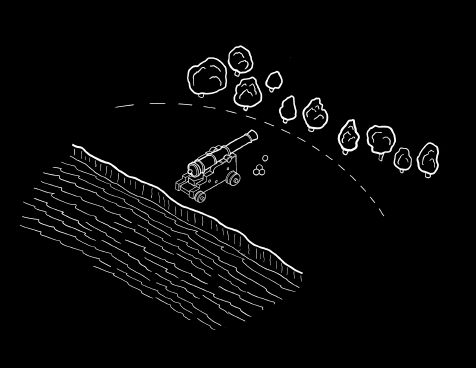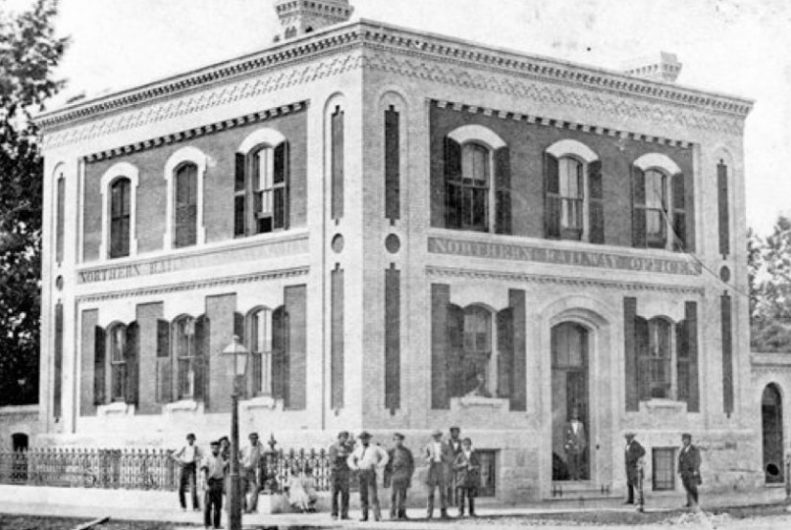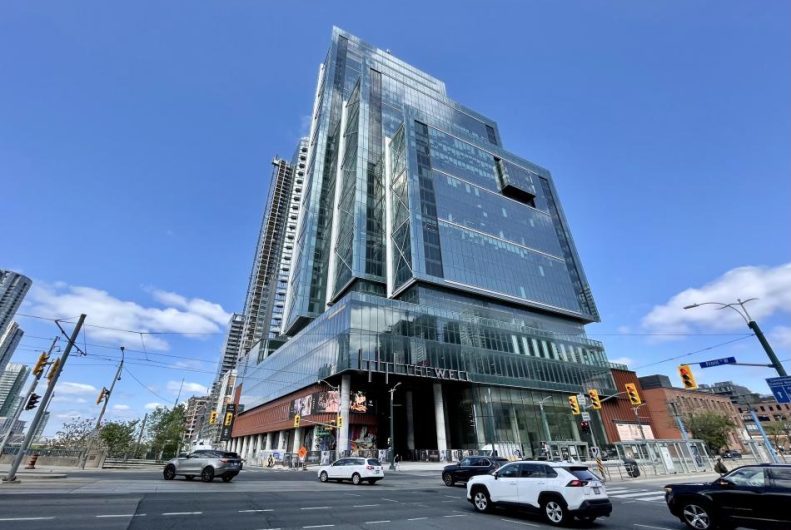The Legacy of The Well
The Well was designed to celebrate the mixed-use legacy of the development site, which was throughout its history home to the military reserve, a 19th-century estate house and the buildings of the Telegram Publishing Company. The site’s southern border on Front Street West was also once home to Toronto’s shoreline, where the City had a vision to create a Parks and Gardens Plan for a public promenade.

Time Immemorial
Atop a bluff, over Sparkling Waters — a gathering place
The traditional territory of the Wendat, Haudenosaunee, and Mississaugas of the Credit First Nations

1793 – 1835
Military reserve
Forests cleared, as far as the cannon shoots — a Garrison reserve

1812 – 1837
The Well’s development site was originally part of the military reserve surrounding Fort York. The reserve lands were sold by the government after The War of 1812 to accommodate new growth as Toronto expanded westward. In 1837, Wellington Place was established, conceived as a grand, tree-lined boulevard that concluded in two public squares.

1830 – 1850
The site became an estate house in the 1830s, which was eventually turned into Loretta Abbey and used as a school. By the mid 1950s, the railway began expanding, spurring rapid industrial growth of the area, mainly on the heels of printing and garment industries. The neighbourhood’s residential dwellings were slowly replaced with the brick and beam warehouses that the King-Spadina district is known for today.

1835 – 1867
Lyndhurst Estate
Land subdivided, industrialists flee city soot — the estate lifestyle

1867 – 1927
Loretto Abbey
Sisters’ safekeeping, times tables and catechesis — a rigourous education

Late 19th century
Industrialization
Lake filled, a cradle for rail-roads — industry pushes prosperity north

1958
In 1959 the Telegram Publishing Company purchased the development site, on which the offices of The Globe and Mail and its printing facility were built. Industries remained the dominant land use in the King-Spadina neighbourhood for decades, but as the industries moved to the suburbs, the area saw a resurgence of retail, office and residential development.

1963 – 2016
Newspapers
Nonstop presses, doors to the fourth estate —a city reflecting itself

2021
The Well
Towers rise, commerce runs deep — a precinct renewed

2022
8 Spadina Avenue
The Well’s signature office tower, 8 Spadina Ave, opens its doors for the first time.

2023
Rising high, over the Sparkling City — a gathering place of modern luxury and urban sophistication















